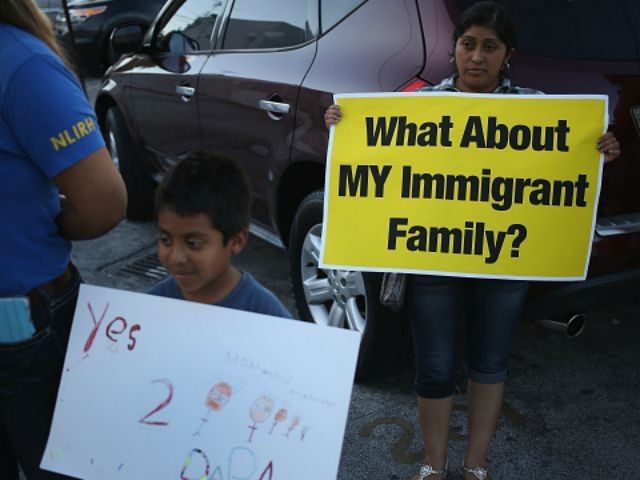More than half of immigrant-headed households in the U.S. access at least one welfare program, and that trend is likely to continue under the policies currently in place, according to Center for Immigrations Studies research director Steven Camarota.
“Our legal immigration system admits large numbers of less educated immigrants who are primarily the family members of immigrants already here,” Camarota explained in an interview with Breitbart News. “Most of these immigrants work but many are unable to provide for themselves or their children and so turn to the welfare system.”
Wednesday, the Center for Immigration Studies released a report analyzing data from on the Census Bureau’s Survey of Income and Program Participation (SIPP). The analysis revealed that 51 percent of immigrant-headed households (both legal and illegal) reported using at least one welfare program in 2012, compared to 30 percent of native-born headed households.
That proportion largely holds true for both legal and illegal immigrants, Camarota, who authored the report, explained. And although there are restrictions on immigrant eligibility for welfare, such bars have not been effective as the report offers detailed explanations on the myriad exceptions and exemptions that have weakened them.
According to Camarota, current immigration policies are contributing to the high welfare use.
“If we continue to admit large numbers of less educated legal immigrants and allow illegal immigrants to remain —most of whom also have modest levels of education — then immigrant welfare use will continue to be very high in the future. If you want to undo that, you have to vigorously enforce your immigration laws and, more important, turn to a very selective immigration system because one of the key findings is that the welfare use rates for the less educated are extremely high,” he said.
The issue is not that the immigrant households accessing these welfare benefits are not working. In fact, as Camarota noted, the vast majority of immigrant households had at least one worker in 2012, a phenomena he attributes in the report largely to the way the post-1996 welfare system has been designed — to aid low-income workers with children.
“There are very important fiscal implications for bringing in a worker. A worker that makes $12 an hour, $14 an hour and has two kids — lets say it’s a mom who has $14 an hour and has two kids, typically depending on how that job plays out that family is eligible for practically every welfare program,” he said
Camarota explained that once a person is in the U.S. and in need it is difficult to bar them from accessing the welfare system.
Regardless of the welfare cost, Camorota said, “Something is amiss when the majority of immigrants with children are not able to feed their own children, feed those kids. Half of immigrant households with children under the age of four are on the [Special Supplemental Nutrition Program for Women, Infants, and Children] and two-thirds of households with a child 5-17 — school aged — are on subsidized school lunch.”
“That says they are struggling to even feed their kids, or they are gaming the system. I don’t know which. But that suggests a problem putting aside the fiscal impact, that something is wrong with our immigration system if immigrants are struggling that badly,” he said.
Another bizarre trend, Camarota noted, is the relatively high welfare use rate among college-educated immigrants, who use welfare at twice the rate of their native-born counterparts. Compare 26 percent of households headed by college-educated immigrants on welfare to 13 percent of college-educated native headed households.
“I can’t explain that. I don’t know why that is,” he said, floating the expansive immigrant networks in the U.S. that provide assistance as possible causes and cultural differences.

COMMENTS
Please let us know if you're having issues with commenting.